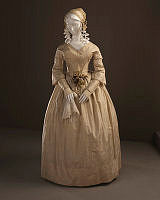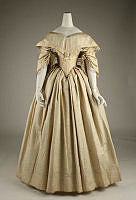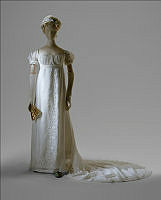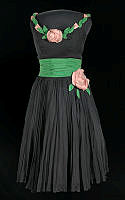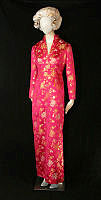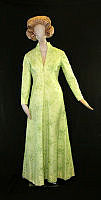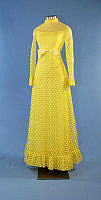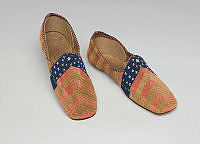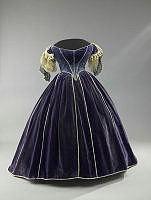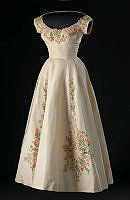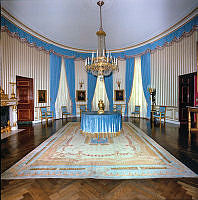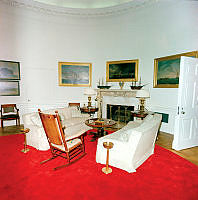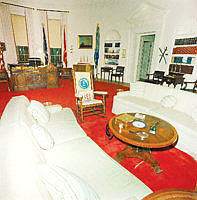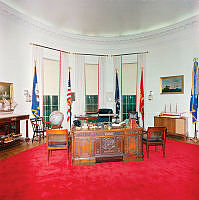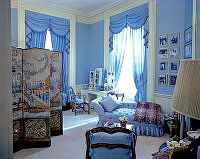Flounce with Flowers, Scrolling Leaves, and Scalloped Boarder
This flounce is an example of Spanish blonde silk Bobbin lace made in the 19th century. Elizabeth Tyler, daughter of President John Tyler and First Lady Letitia Christian Tyler, wore a wedding veil said to be of blonde lace, a type of silk Bobbin lace, originally made in France and worn by wealthy women in the 18th and 19th centuries. It is made of raw, undyed silk threads, which is where the term “blonde lace” comes from. In later years, blonde lace dyed black also became a popular trimming for expensive gowns. Elizabeth Tyler married William Waller in an intimate White House ceremony on January 31, 1842.

